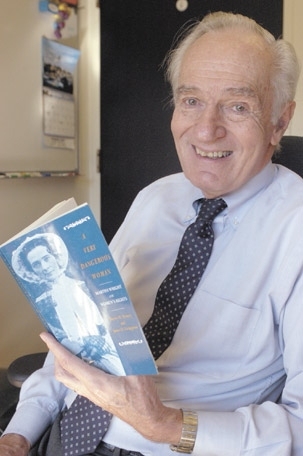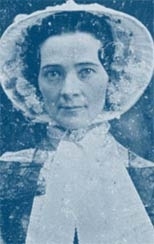An MIT physicist and his wife have penned the first biography of a pioneering women's rights activist and abolitionist whose good friends included Susan B. Anthony, Frederick Douglass, Harriet Tubman and Elizabeth Cady Stanton.
"A Very Dangerous Woman: Martha Wright and Women's Rights" (University of Massachusetts Press, 2004) describes its heroine's significant involvement in some of the major issues of her time. The book's title refers to her conservative neighbors' opinion of the mother of seven.
How did James Livingston, a senior lecturer in MIT's Department of Materials Science and Engineering, come to co-author a book on Wright? In the 1980s, he discovered that she was his great-great-grandmother. Further sleuthing revealed that a large collection of her letters had been stored in the archives at Smith College and elsewhere. Wright's sister was Lucretia Mott, one of the country's most famous early feminists.
No one, however, had ever written a book about Martha, despite her many illustrious acquaintances, voluminous letters and heady resume. She was one of the five women who organized the 1848 Seneca Falls Women's Rights Convention. She was president of the National Woman Suffrage Association. And at age 26, she attended the founding of the American Anti-Slavery Society. Later she was active in the Underground Railroad.
She had been lost in her sister's shadow.
Enter Livingston and his wife, Sherry H. Penney. The two began devoting serious time in 2000 to researching and writing "A Very Dangerous Woman." Before then, Livingston explained, they simply didn't have the time. Both had demanding careers; he was teaching solid-state physics at MIT and she was chancellor of the University of Massachusetts.
But as Livingston's teaching load began to decrease (he currently teaches a freshman seminar on magnets) and Penney stepped down from the chancellor position (she remains a professor at the university), the book about Wright began to become a reality.
The couple made some 12 trips to Smith College, staying for three days at a time to scan through about 1,500 letters written by Wright. "If we found one that looked interesting, we had it copied so we could read it at home," Livingston said. On each trip they made an estimated 100 copies.
Other sources included Syracuse University (home to 300 more Wright letters), and MIT's Program in Women's Studies reading room. "I was used to using the MIT Libraries as a major resource for physics, but I was surprised by the wealth of material on women's studies," Livingston said.
The result? "A wonderful book," writes Syndicated Columnist Ellen Goodman. "Is it possible that we are still discovering our Founding Mothers? Now it's Martha Wright's turn to be unearthed from history to her-story. This book shows her passion, joy and humor. If she was 'a very dangerous woman,' we could use a lot more of them," wrote Goodman.
Listen to Martha herself:
On a neighbor's asking "with the slightest possible sneer" whether overnight guest Frederick Douglass was given "the best room"--"I told him 'certainly' and informed him that in conversing with a man of superior intellect one forgot whether he was black or white."
On the Civil War and her son's being in the Union army--"I open the paper every day with fear and trembling ��������������������������� I cannot say that I wish [the war] to end, till slavery is abolished."
On challenging traditional gender roles by teaching her young sons to knit--"One of them has ��������������������������� made a bag to put his marbles in, not sewed exactly like a thread case, but sufficiently neat for a beginning, and quite marvelous considering the slow perceptions of the sterner sex."
A version of this article appeared in MIT Tech Talk on November 10, 2004 (download PDF).







